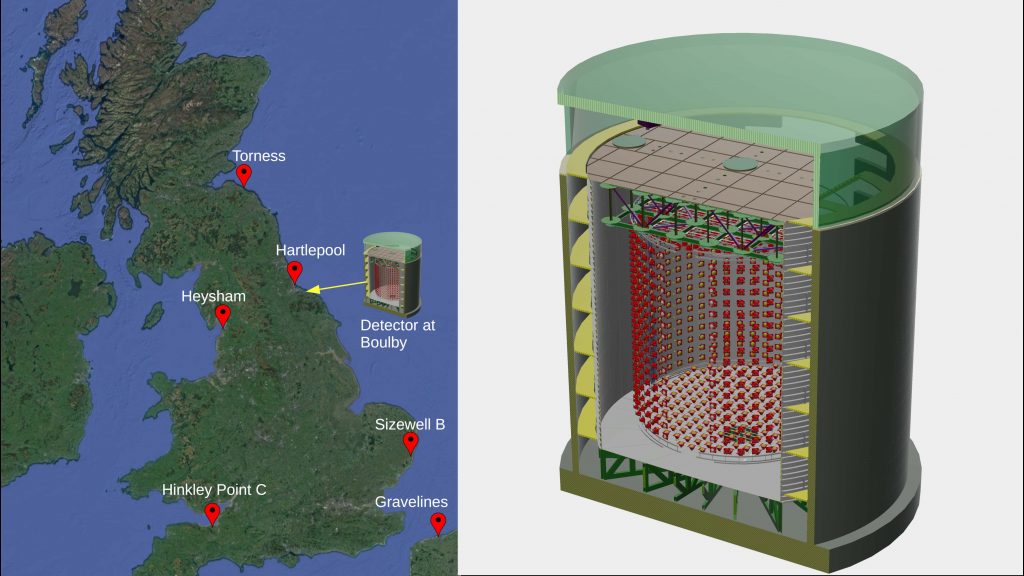Byproducts of fission reactors can provide insight into nuclear reactor use.
From the Journal: AIP Advances

WASHINGTON, Oct. 1, 2024 – Nuclear fission reactors act as a key power source for many parts of the world and worldwide power capacity is expected to nearly double by 2050. One issue, however, is the difficulty of discerning whether a nuclear reactor is being used to also create material for nuclear weapons. Capturing and analyzing antimatter particles has shown promise for monitoring what specific reactor operations are occurring, even from hundreds of miles away.
In AIP Advances, by AIP Publishing, researchers from the University of Sheffield and the University of Hawaii developed a detector that senses and analyzes antineutrinos emitted by nuclear reactors. The detector designed by Wilson et al. senses antineutrinos and can characterize their energy profiles from miles away as a way of monitoring activity at nuclear reactors.
“In this paper, we test a detector design that could be used to measure the energy of particle emission of nuclear fission reactors at large distances,” said author Stephen Wilson. “This information could tell us not only whether a reactor exists and about its operational cycle, but also how far away the reactor is.”
Neutrinos are chargeless elementary particles that have a mass of nearly zero, and antineutrinos are their antimatter counterpart, most often created during nuclear reactions.
Capturing these antiparticles and analyzing their energy levels provides information on anything from operational cycle to specific isotopes in spent fuel.
The group’s detector design exploits Cherenkov radiation, a phenomenon in which radiation is emitted when charged particles moving faster than light pass through a particular medium, akin to sonic booms when crossing the sound barrier. This is also responsible for nuclear reactors’ eerie blue glow and has been used to detect neutrinos in astrophysics laboratories.
The researchers proposed to assemble their device in northeast England and detect antineutrinos from reactors from all over the U.K. as well as in northern France.
One issue, however, is that antineutrinos from the upper atmosphere and space can muddle the signal, especially as very distant reactors yield exceeding small signals — sometimes on the order of a single antineutrino per day.
To account for this, the group proposed to place their detector in a mine more than 1 kilometer underground.
“Discriminating between these particles is also a significant analysis challenge, and being able to measure an energy spectrum can take an impractically long time,” Wilson said. “In many ways, what surprised me most is that this is not actually impossible.”
Wilson hopes the detector stimulates more discussion in how to use antineutrinos to monitor reactors, including measuring the antineutrino spectrum of spent nuclear fuel or developing smaller detectors for use closer to reactors.
###
Article Title
Remote reactor ranging via antineutrino oscillations
Authors
Stephen Thomas Wilson, James Armitage, Chris Cotsford, Niamh Holland, John G. Learned, and Matthew Malek
Author Affiliations
University of Sheffield, University of Hawaii
